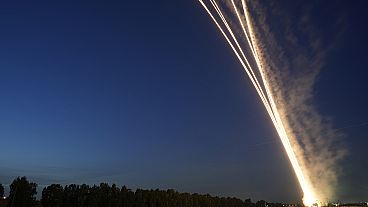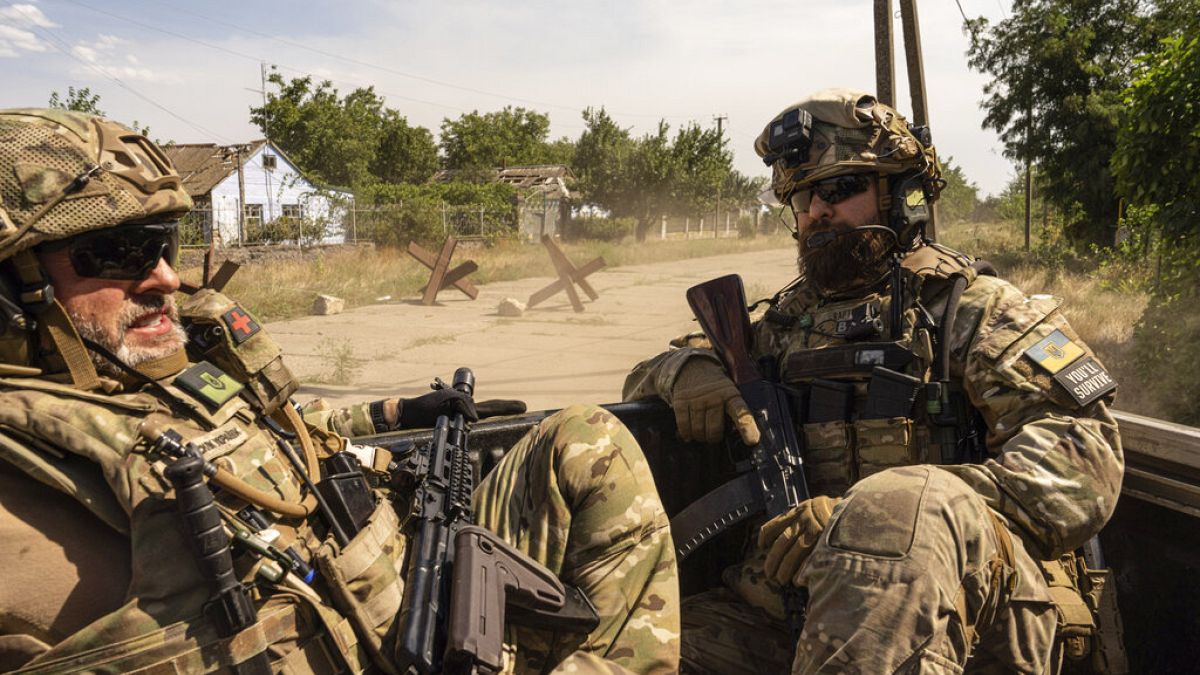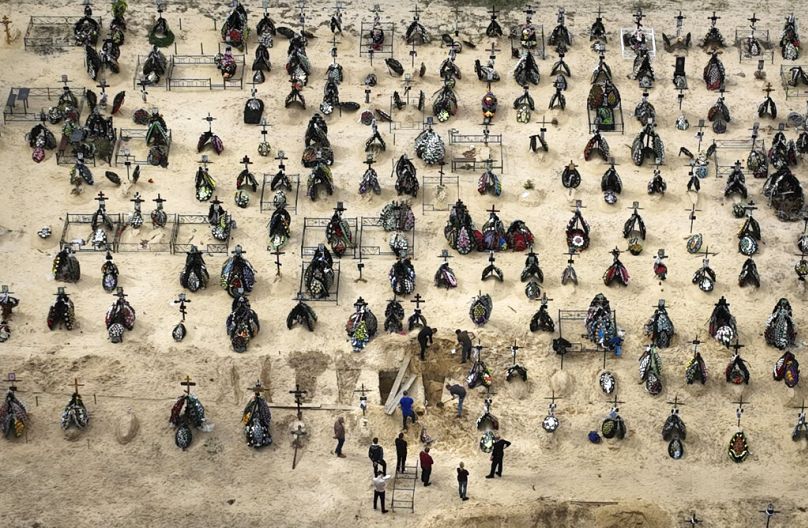From Ukrainian troops advancing around Kharkiv to the Pentagon's latest Russian casualties estimate, here is what you need to know about the Ukraine war this Tuesday.
1. Ukraine says forces advancing in Kharkiv, holding in Donbas
Ukraine said on Tuesday its military has captured ground around Kharkiv in the northeast and is resisting a heavy Russian assault in frontline towns near the eastern city of Donetsk.
Ukrainian officials said Russian troops were launching waves of attacks as they try to seize control of the industrialised Donbas region.
“The situation in the region is tense – shelling is constant throughout the front line … The enemy is also using air strikes a great deal,” Donetsk regional Governor Pavlo Kyrylenko told Ukrainian television.
“The enemy is having no success," he added. "Donetsk region is holding.”
Near Kharkiv in the northeast, Ukrainian troops captured the town of Dovhenke from Russian forces and were advancing towards Izium, Ukrainian presidential adviser Oleksiy Arestovych said in a video posted on YouTube.
“The situation is very interesting. Ukraine’s forces are moving very successfully. Attempts by Russia to regain lost ground were not successful. Ukraine may end up encircling them,” he said.
Euronews cannot independently verify these claims.
2. Pentagon: 80,000 Russian casualties in Ukraine
Up to 80,000 Russians have been killed or wounded in Ukraine since the war began in late February, a senior Pentagon official estimated.
"The Russians have probably taken 70 or 80,000 casualties in less than six months," Under Secretary of Defense Colin Kahl said on Monday.
He added that Moscow's armed forces have also lost "3,000 to 4,000" armoured vehicles, and could be running low on precision-guided missiles, including air and sea-launched cruise missiles.
Kahl admitted that Ukraine had also suffered significant troop losses, but stopped short of giving an exact figure.
"Both sides are taking casualties," he said. "The war is the most intense conventional conflict in Europe since the Second World War."
"But the Ukrainians have a lot of advantages, not the least of which is their will to fight," Kahl added.
Kahl said Russia was running low on missiles after firing a large number on Ukraine targets since launching the invasion in February.
He pointed to a slowdown in Russia's use of longer-range and precision-guided missiles as an indicator that supplies were being depleted.
Russia's losses are "pretty remarkable considering the Russians have achieved none of Vladimir Putin's objectives at the beginning of the war," he told reporters.
3. Russian satellite blasts off amid Ukraine concerns
Russia launched a satellite from Kazakhstan on Tuesday, amid fears by some western officials that it will be used to support the country's Ukraine offensive.
The observation satellite is ostensibly for Iran, whose space agency says the device will be used to monitor the country's borders, improve agricultural activity and control water resources.
However, the US claims the satellite, which is named after the Persian poet and scholar Omar Khayyam, is intended for military use.
Tehran denies this, maintaining that its aerospace activities are peaceful and in accordance with international law.
The Washington Post previously reported that Russia "plans to use the satellite for several months" as part of its offensive in Ukraine, before handing back control to Iran.
In June 2021, Russian President Vladimir Putin rejected the Post's claims, saying Moscow was preparing to provide a sophisticated satellite to Iran to improve its espionage capabilities.
4. More finger-pointing over the shelling ofZaporizhzhia nuclear plant
Russia and Ukraine have again accused one another of bombing Europe's biggest nuclear power plant in southern Ukraine.
Moscow claimed on Monday that Ukrainian shelling had caused a power surge and fire at Zaporizhzhia, forcing staff to reduce activity in two nuclear reactors.
Meanwhile, Ukraine blamed Russia for basing troops and military equipment at the site.
Zaporizhzhia, which was captured by Russian forces early on in the war, is an increasing cause of concern for international observers, with both the UN and International Atomic Energy Agency issuing stark warnings about the risks of fighting near the plant.
“Shelling of the territory of the nuclear plant by the Ukrainian armed forces is highly dangerous,” Kremlin spokesman Dmitry Peskov told AP. “It’s fraught with catastrophic consequences ... for the entire Europe.”
Ukraine's military spokesman, Andriy Yusov, responded that Russian forces have laid explosives at Zaporizhzhia to stop a potential Ukrainian counteroffensive in the region.
In the past, Ukrainian officials have said Russia is using Zaporizhzhia to stage attacks on its forces, turning the Ukrainian workers at the plant into "human shields."
The head of Ukraine's state nuclear power company Energoatom called on Monday for Zaporizhzhia to be made a military-free zone, warning of a Chornobyl-style nuclear disaster.
5. Russia halts US inspections of its nuclear stockpile
Russia announced it will no longer allow the US to inspect its nuclear arsenal as part of an international arms control treaty.
Moscow said the move, which it described as temporary, was in response to Western sanctions that have hamstrung its ability to monitor US facilities.
This is the first time Russia has halted US inspections under the Obama-era New START nuclear arms control treaty, coming amid heightened tensions between the old Cold War foes.
Announcing the freeze, the Russian Foreign Ministry said the sanctions imposed on Russian flights, visa restrictions and other obstacles imposed by the West have made it increasingly impossible for Russian military experts to visit US nuclear weapons sites.
This gave Washington “unilateral advantages," it claimed.
The Biden administration did not immediately comment on the development.
Ankit Panda, an expert on nuclear policy at the Carnegie Endowment for International Peace, said Russia was attempting to "pressure" the US over Western sanctions due to its Ukraine invasion.
“They basically are using New START inspections — something the US cares about — to force Washington's hands,” Panda said.
The New START treaty, signed in 2010 by then US President Barack Obama and Russian President Dmitry Medvedev, limits the number of nuclear warheads each country can deploy to 1,550, alongside 700 missiles and bombers.
On-site inspections are part of the deal to ensure it is being honoured.



